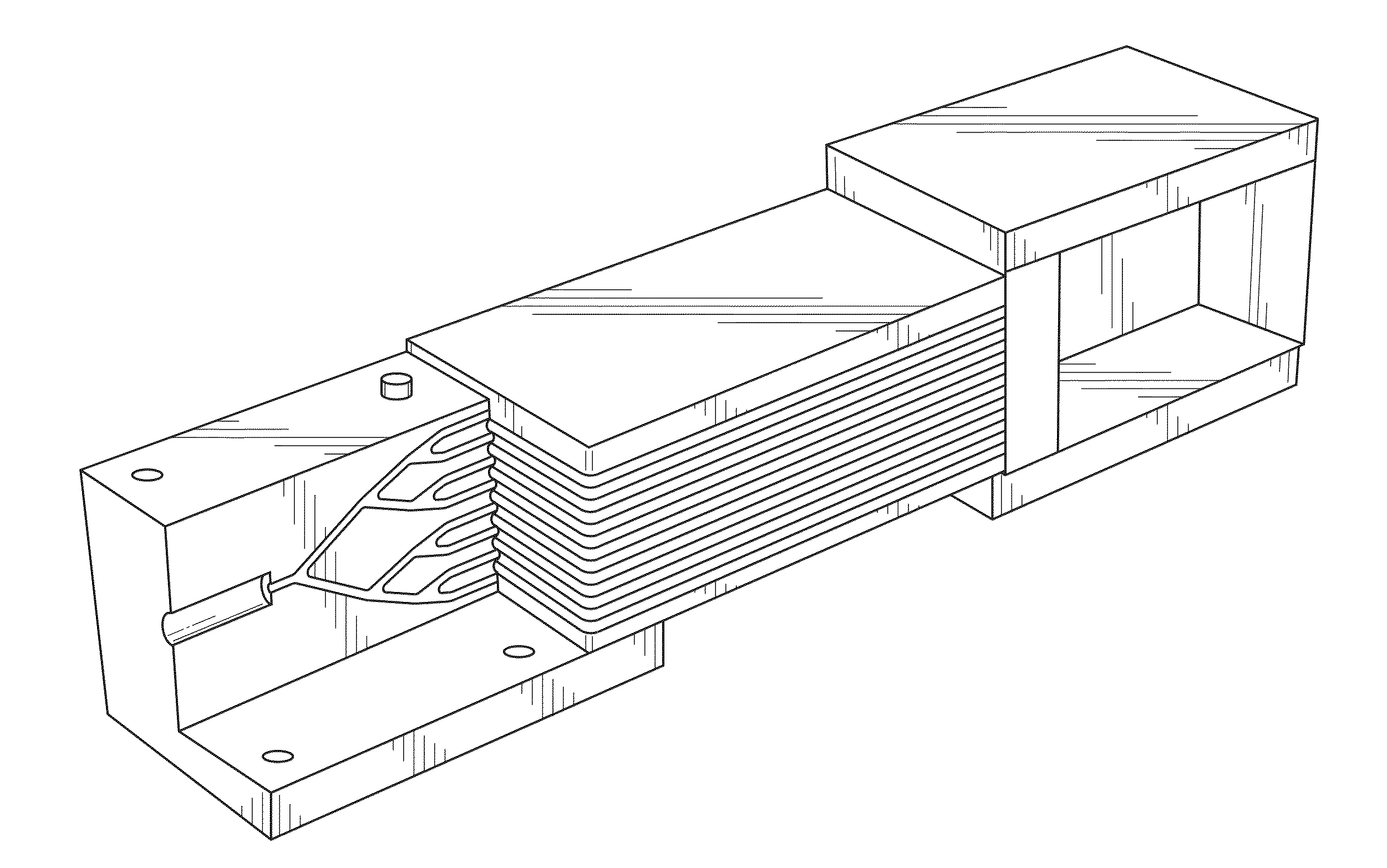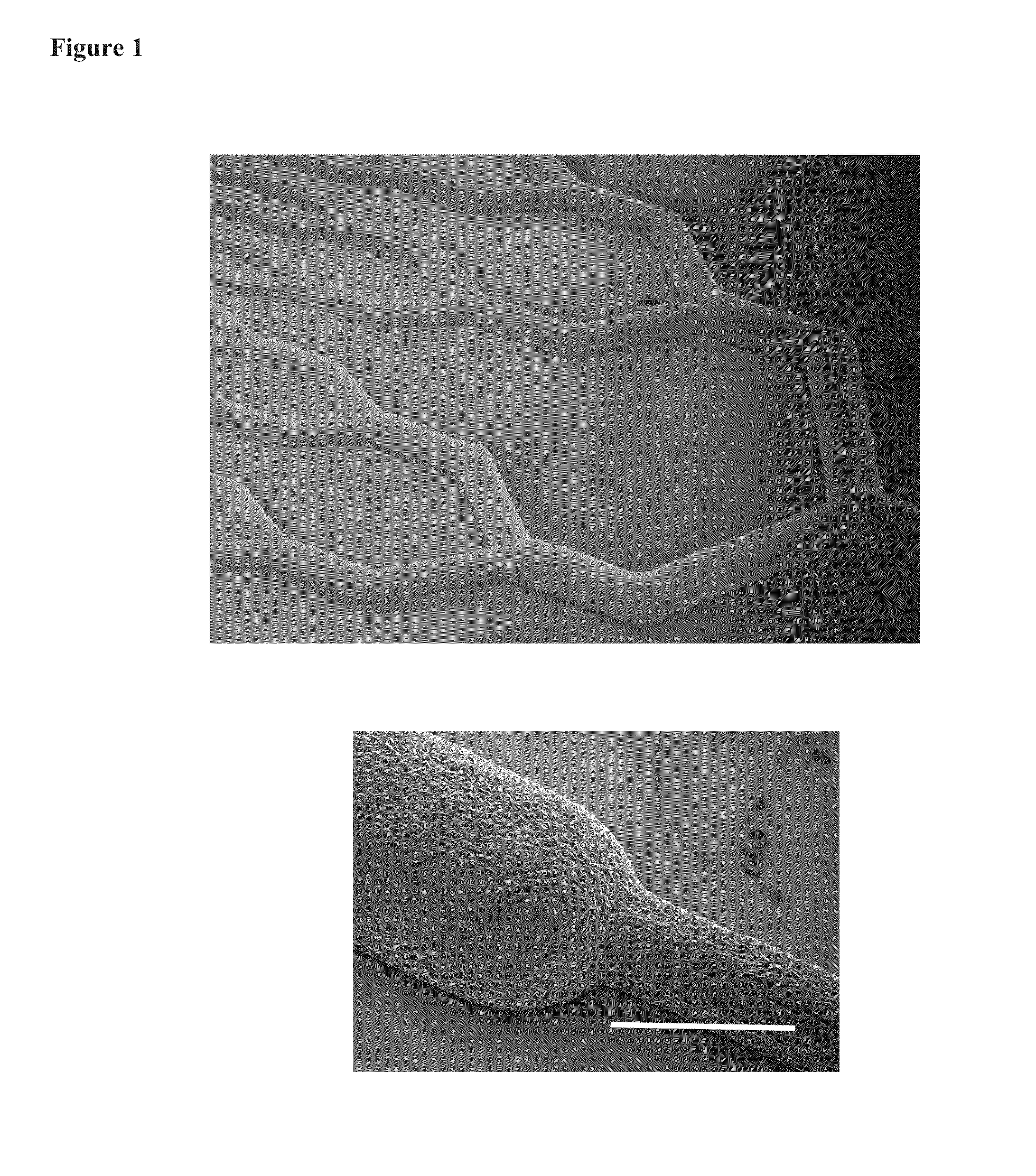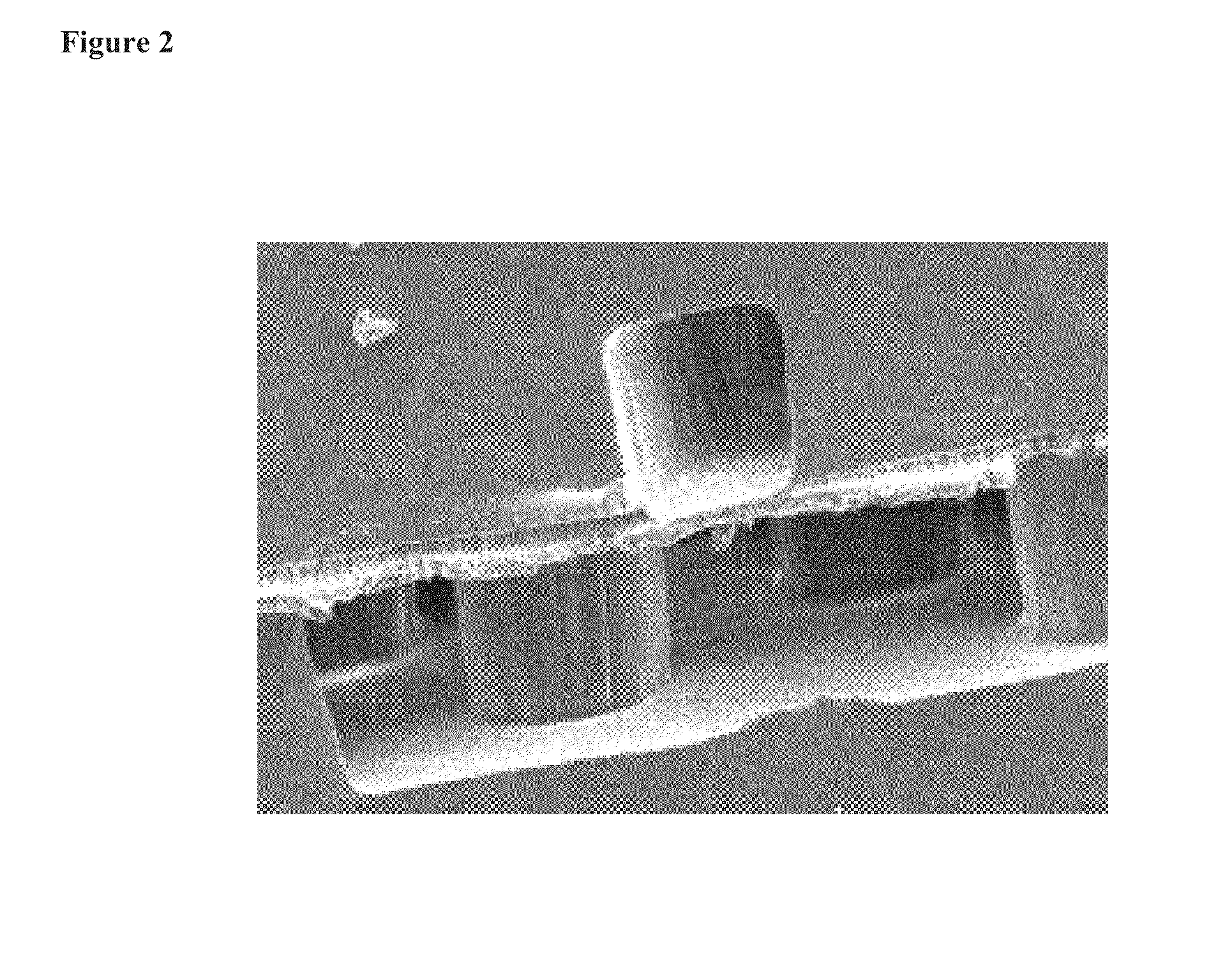Microfabricated artificial lung assist device, and methods of use and manufacture thereof
a technology of artificial lung and assist device, which is applied in the field of microfabricated artificial lung assist device, and methods of use and manufacture thereof, can solve the problems of mechanical trauma or infection, limited effectiveness of pharmacologic therapies, and patients with damaged or diseased lungs that are often barely sustained by these methods, so as to facilitate gas exchange, reduce the risk of blood clots, and improve the effect of fluid flow
- Summary
- Abstract
- Description
- Claims
- Application Information
AI Technical Summary
Benefits of technology
Problems solved by technology
Method used
Image
Examples
example 1
Preparation and Testing of a First Set of Exemplary Oxygenator Devices
[0130]A parallel plate multilayered silicone-based microfluidic device containing branched microvascular networks separated from oxygen channels by thin non-porous PDMS membranes with high gas permeance was constructed. The network design utilizes a biomimetic flow pattern in small channels to reduce both the fluid forces on the blood in the channels and the overall volume of the device. The device maximizes gas transfer efficiency by incorporating an ultrathin membrane with high oxygen permeance and by providing a membrane-blood contact area sufficient for high levels of oxygenation without the need for large blood prime volumes. Because the membrane is thinner than those generally seen in ECMO devices, it is more gas permeable and requires less surface area for equivalent oxygen transfer. Reduced membrane area is also expected to reduce the complications associated with blood-membrane interactions, thereby lower...
example 2
Preparation and Testing of a Second Set of Exemplary Oxygenator Devices
[0149]Two additional oxygenator devices (D05 and D06) were prepared and tested. Each oxygenator device had the following features: two bi-layers made of polydimethylsiloxane, the gas-permeable membrane in each bi-layer was 11 μm thick, channels in the microvascular network (for PBS flow) had a height of 100 μm, the device was configured so that the layer containing the microvascular network for PBS flow in the first bi-layer was located adjacent to the layer containing the microvascular network for PBS flow in the second bi-layer.
Part I—Preparation of Oxygenator Device
[0150]Oxygenator devices were prepared based on procedures described above and the following general protocol.
Making Thin PDMS Membranes
[0151]First, spin a dollop (approximately the size of a half dollar) of PDMS at 5000 rpm for 60 seconds (with a ramp speed of 1000) onto a clean, coated wafer. Place the wafer in an oven at 65° C. for approximately ...
PUM
 Login to View More
Login to View More Abstract
Description
Claims
Application Information
 Login to View More
Login to View More - R&D
- Intellectual Property
- Life Sciences
- Materials
- Tech Scout
- Unparalleled Data Quality
- Higher Quality Content
- 60% Fewer Hallucinations
Browse by: Latest US Patents, China's latest patents, Technical Efficacy Thesaurus, Application Domain, Technology Topic, Popular Technical Reports.
© 2025 PatSnap. All rights reserved.Legal|Privacy policy|Modern Slavery Act Transparency Statement|Sitemap|About US| Contact US: help@patsnap.com



